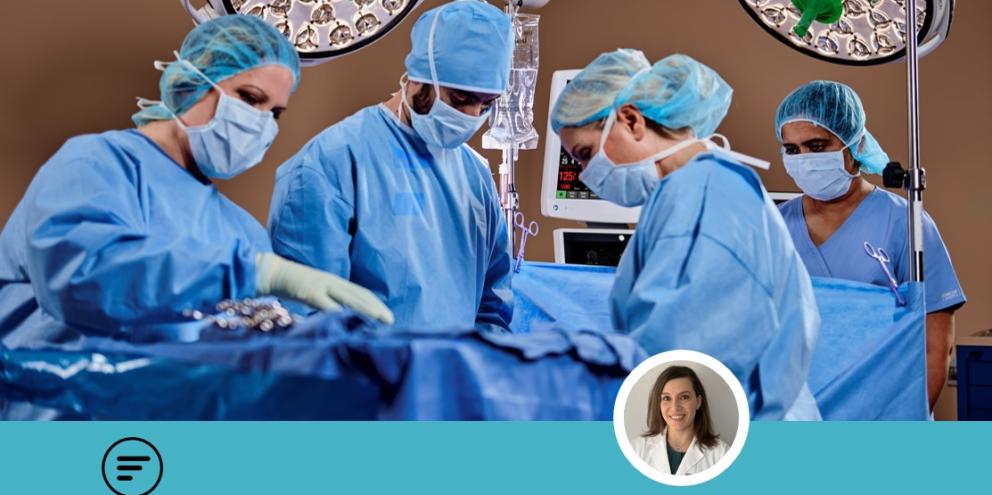As an anesthesiologist at Brigham and Women’s Hospital in Boston, many of my colleagues and I are well aware of the environmental benefits of low flow anesthesia, and we are committed to supporting broader utilization of low flow among our anesthesia teams. However, I recognize the barriers that hold many anesthesiologists back from administering low flow anesthesia, including increased cognitive burden associated with accurate execution, and a lack of awareness about exactly how damaging anesthetic gases can be to the environment.
While those factors have played a significant role in preventing broader adoption of low flow, two recent and important developments are helping to address these barriers and shift the momentum toward low flow in a positive way.
Defining Low Flow Anesthesia
What is considered low flow anesthesia? For the purposes of this article, we defined low flow anesthesia as reducing gas flow to the lowest level consistent with equipment capabilities and safe and effective patient care (often resulting in mean fresh gas flow rates below 1 liter per minute).
Barrier 1: Cognitive Burden on Clinicians. New Development: Automated Anesthesia Technology
The cognitive burden associated with manual low flow anesthesia comes as a result of anesthesia teams needing to continuously monitor airway gases and regularly adjust gas flow in order to ensure the appropriate and safe mix of anesthetic agent and oxygen is provided.
Automated fresh gas delivery has been implemented in Europe for more than 10 years[1], but was not available in the United States until the FDA approved Et Control software in April 2022[2] to aid clinicians in low flow anesthesia administration. Anesthesia teams can use that technology, End-tidal Control*, to set oxygen and anesthetic agent targets for each patient. The software then maintains those targets automatically throughout the patient’s surgery, as guided by the anesthesia professional to meet the needs of the patient.
David Hovord, MB BChir, clinical assistant professor and a lead for University of Michigan’s Green Anesthesia Initiative, has experience using End-tidal Control in previous roles at health systems in Europe[3].
“One of the challenges anesthesia teams are facing is that patients are getting sicker. The care is getting more and more complex. So automating anesthesia just takes care of a task and in doing so it frees up your mental workload to focus on everything else. That’s compelling for providers as well as the C-Suite”[4].
Barrier 2: Lack of Awareness of Environmental Benefits. New Development: Increased Focus on Reducing Greenhouse Gas Emissions Among Anesthesiologists and Hospitals
As a proponent of automated low flow anesthesia, I find it encouraging that even a small but growing number of U.S. health systems are establishing low flow practices for environmental sustainability purposes[5, 6, 7, 8].
Scoping the Damage of Anesthetic Agents
Just how much harm do anesthetic gases cause the environment? Operating rooms represent 70% of hospitals’ overall waste and generate three to six times as much carbon as the rest of the average health system[14]. Anesthetics gases, specifically, comprise 25% of overall waste in the OR[16]. The gases contribute 51% of direct greenhouse gas emissions for any general surgical procedure[16].
Broader adoption of low-flow anesthesia can be a key lever in helping reduce emissions, with one study finding that it can help decrease greenhouse gases caused by anesthetic agents by as much as 64%[9].
“A strong body of evidence supports the importance of minimizing waste anesthetic gas released into the environment to limit contributions to climate change and associated health risks,” according to a narrative review in the journal Anesthesia & Analgesia[10].
The U.K.-based Association of Anaesthetists specifically recommends avoiding gases with high climate impacts, notably desflurane and nitrous oxide[11]. Desflurane, for example, is 20 times more potent than sevoflurane[12]. The American Society of Regional Anesthesia and Pain Medicine also stated that there is “no clinical advantage for routine use of desflurane over sevoflurane”[13].
Automated Low Flow Anesthesia Poised to Gain Momentum
Anesthesiology professionals and hospitals are at the beginning of a critical journey toward broader adoption of low flow anesthesia. Now, new technologies are available that can help support clinicians along that path. I’m excited and optimistic about the opportunities these new developments are opening to reduce the cognitive burden and improve environmental sustainability for more and more hospitals and health systems.
*Et Control is indicated for patients 18 years of age or older in the United States.
Sources:
1. Green Anesthesia, GE HealthCare https://www.gehealthcare.com/insights/article/green-anesthesia-new-software-reduces-surgery%E2%80%99s-carbon-footprint-by-up-to-44
2. GE HealthCare receives FDA-approval of first-even software to help automate anesthesia delivery and reduce greenhouse gas emissions during surgery, GE HealthCare
https://www.gehealthcare.com/about/newsroom/press-releases/ge-healthcare-receives-fda-approval-of-first-ever-software-to-help-automate
3. Green Anesthesia, GE HealthCare https://www.gehealthcare.com/insights/article/green-anesthesia-new-software-reduces-surgery%E2%80%99s-carbon-footprint-by-up-to-44
4. Research interview conducted in February 2024
5. The small change hospitals can make for a big climate impact, Time Magazine
https://time.com/collection/time-co2-futures/6341073/hospitals-tackling-anesthesia-climate-impact/
6. Cutting greenhouse gas use in anesthesia, WBUR
https://www.wbur.org/hereandnow/2023/02/01/anesthesia-greenhouse-gas
7. Earth Day: How anesthesiologists are tackling greenhouse gases in the operating room, UC Davis Health
https://health.ucdavis.edu/news/headlines/earth-day-how-anesthesiologists-are-tackling-greenhouse-gases-in-the-operating-room/2023/04
8. Effects of surgery on a warming planet: Can anesthesia go green? NPR
9. The anesthesiologist and global climate change: an ethical obligation to act, Current Opinion in Anesthesiology
https://journals.lww.com/co-anesthesiology/abstract/2020/08000/the_anesthesiologist_and_global_climate_change__an.18.aspx
10. Environmental and occupational considerations of anesthesia: a narrative review and update, Anesthesia & Analgesia
https://journals.lww.com/anesthesia-analgesia/fulltext/2021/10000/environmental_and_occupational_considerations_of.2.aspx
11. Action guidance for addressing pollution from inhalational anaesthetics, Association of Anaesthetists
https://associationofanaesthetists-publications.onlinelibrary.wiley.com/doi/10.1111/anae.15785
12. A call for immediate climate action in anesthesiology: routine use of minimal or metabolic fresh gas flow reduces our ecological footprint , Canadian Journal of Anesthesia
https://link.springer.com/article/10.1007/s12630-022-02393-z
13. Greening the operating room and your budget by reducing desflurane use, American Society of Regional Anesthesia and Pain Medicine
https://www.asra.com/news-publications/asra-newsletter/newsletter-item/asra-news/2022/05/01/greening-the-operating-room-and-your-budget-by-reducing-desflurane-use
14. Operating rooms are the climate change contributor no one is talking about, American Association for the Advancement of Science
https://www.eurekalert.org/news-releases/951971
15. An audit of potentially recyclable waste from anaesthetic practice, Anaesthesia and Intensive Care https://oce.ovid.com/article/00000522-200937050-00020
16. The impact of surgery on global climate: a carbon footprinting study of operating theaters in three health systems, The Lancet Planetary Health
https://www.thelancet.com/journals/lanplh/article/PIIS2542-5196(17)30158-4/fulltext
JB29035XX
©2024 GE HealthCare
GE is a trademark of General Electric Company used under trademark license. Reproduction in any form is forbidden without prior written permission from GE HealthCare. Nothing in this material should be used to diagnose or treat any disease or condition. Readers must consult a healthcare professional.

Stephanie Yacoubian, MD
Dr. Stephanie Yacoubian is an anesthesiologist in Boston, MA and is affiliated with Brigham and Women's Hospital. She received her medical degree from American University of Beirut Faculty of Medicine and has been in practice 13 years. She specializes in obstetrical anesthesiology.








